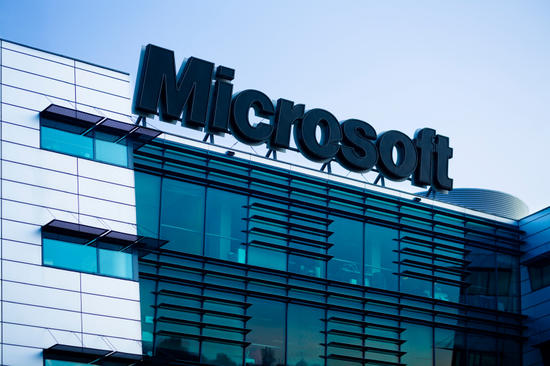In a significant shift within the AI landscape, Microsoft has expanded its offerings by incorporating Anthropic’s Claude models into its Microsoft 365 Copilot assistant. This move presents businesses with more options for generative AI technology, thereby compelling leaders and automation specialists to reassess their existing frameworks and strategies. As organizations strive to harness AI for improved efficiency and innovation, understanding the implications and comparative strengths of AI solutions is paramount.
The introduction of Anthropic’s Claude models signifies a critical development in Microsoft’s approach to artificial intelligence. Historically, the company has heavily invested in OpenAI, committing over $13 billion to leverage its technology across various platforms like Bing and Windows. By integrating Claude into the Copilot feature, Microsoft not only diversifies its AI portfolio but also acknowledges the growing demand for more robust capabilities in addressing complex reasoning tasks. Anthropic, founded by former OpenAI executives and valuated recently at $183 billion, has garnered investor confidence, which raises interesting questions about the competitive landscape of AI technologies.
From a functionality standpoint, both OpenAI and Anthropic offer unique advantages and challenges. OpenAI’s models have been recognized for their versatility and broad applicability across creative and technical domains. They excel in generating human-like text, making them favorable for tasks involving content creation, customer support chatbots, and more. Nonetheless, one of the criticisms leveled against OpenAI’s offerings often revolves around the high costs associated with usage, particularly as scale increases. For small to medium-sized businesses (SMBs), these expenses could weigh heavily, especially when attempting to balance ROI with operational needs.
Conversely, Anthropic’s Claude models have emerged as compelling alternatives, specifically optimized for reasoning-heavy tasks. This is particularly advantageous for businesses needing to analyze vast datasets or compile comprehensive reports. Scalability remains a cornerstone of Anthropic’s model, as its cloud-native architecture operates on major platforms like Amazon and Google Cloud. This flexibility allows SMBs to deploy the technology according to their operational demands without being limited by infrastructure constraints. However, as with any emerging competitor, organizations may find the ecosystem and community surrounding Anthropic not as mature as that of OpenAI, which could influence support, resources, and integration capabilities.
The Copilot feature’s recent update allows enterprise customers enrolled in Microsoft’s Frontier program the option to choose between Anthropic’s Claude Opus 4.1 and OpenAI’s models. This choice not only provides flexibility but also enables administrators to fine-tune their tools based on specific project requirements and strategic goals. This is particularly relevant in dynamic economic environments where adaptability translates to competitive advantage. Choosing the right model will depend on the specific application context: for organizations focused more on content interpretation and creation, OpenAI might still hold an edge; for those engaging in complex reasoning or analytical tasks, Anthropic could present a better strategy.
The financial implications of adopting these platforms are as varied as their technical capabilities. While initial costs for using OpenAI may be higher, the potential for increased efficiency and quality might justify this investment through faster project completion and enhanced customer experience. In contrast, Anthropic’s pricing structure and model deployment on cost-effective cloud infrastructure could present a more manageable financial commitment, especially for startups and less-resourced SMBs. Therefore, analyzing total cost of ownership alongside anticipated ROI on productivity gains becomes essential when businesses evaluate these platforms.
As organizations integrate AI into their processes, the long-term sustainability of these investments is another important consideration. Scalability is crucial; businesses should ensure that the platforms they choose can grow with their operational demands. Microsoft’s ongoing evaluation of its in-house model, MAI-1, further emphasizes the importance of strategic adaptability in a rapidly evolving landscape. Maintaining agility in choices can mean the difference between leading the market or playing catch-up.
With the growing competition in the AI ecosystem, there is a notable trend towards customization and specialized features. Microsoft’s decision to include Anthropic might also serve as a hedge against potential limitations or fluctuations in their relationship with OpenAI. As the market matures, it is evident that a one-size-fits-all approach will not suffice. Leaders need to evaluate their specific needs and long-term objectives while remaining cognizant of the emerging capabilities within AI platforms.
In conclusion, the integration of Anthropic’s Claude models into Microsoft 365 Copilot reflects a fundamental understanding of the evolving AI landscape. SMB leaders and automation specialists must carefully assess their options between OpenAI and Anthropic, considering not just the technical features but also financial implications, scalability, and ROI. The ongoing competition promises an innovative trajectory for AI solutions, making it essential for organizations to remain adaptable.
FlowMind AI Insight: As businesses increasingly seek agility in their AI strategies, the decision to diversify technology partners—such as integrating both OpenAI and Anthropic—may prove to be a strategic advantage. Continuous evaluation of emerging solutions and adaptability to changing needs will be essential in staying ahead in the competitive landscape of automation.
Original article: Read here
2025-09-24 17:39:00

